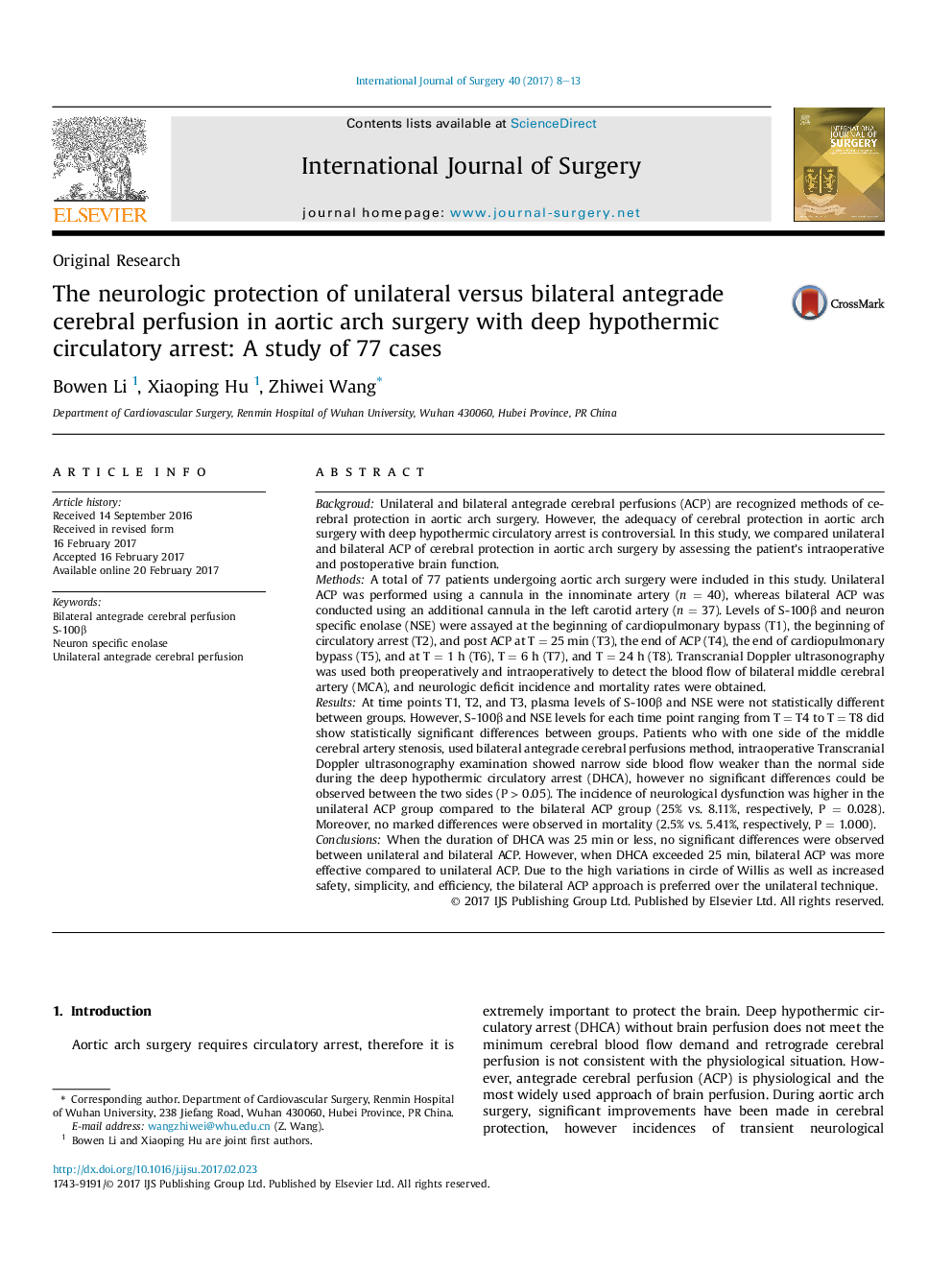| کد مقاله | کد نشریه | سال انتشار | مقاله انگلیسی | نسخه تمام متن |
|---|---|---|---|---|
| 5732275 | 1611939 | 2017 | 6 صفحه PDF | دانلود رایگان |
BackgroudUnilateral and bilateral antegrade cerebral perfusions (ACP) are recognized methods of cerebral protection in aortic arch surgery. However, the adequacy of cerebral protection in aortic arch surgery with deep hypothermic circulatory arrest is controversial. In this study, we compared unilateral and bilateral ACP of cerebral protection in aortic arch surgery by assessing the patient's intraoperative and postoperative brain function.MethodsA total of 77 patients undergoing aortic arch surgery were included in this study. Unilateral ACP was performed using a cannula in the innominate artery (n = 40), whereas bilateral ACP was conducted using an additional cannula in the left carotid artery (n = 37). Levels of S-100β and neuron specific enolase (NSE) were assayed at the beginning of cardiopulmonary bypass (T1), the beginning of circulatory arrest (T2), and post ACP at T = 25 min (T3), the end of ACP (T4), the end of cardiopulmonary bypass (T5), and at T = 1 h (T6), T = 6 h (T7), and T = 24 h (T8). Transcranial Doppler ultrasonography was used both preoperatively and intraoperatively to detect the blood flow of bilateral middle cerebral artery (MCA), and neurologic deficit incidence and mortality rates were obtained.ResultsAt time points T1, T2, and T3, plasma levels of S-100β and NSE were not statistically different between groups. However, S-100β and NSE levels for each time point ranging from T = T4 to T = T8 did show statistically significant differences between groups. Patients who with one side of the middle cerebral artery stenosis, used bilateral antegrade cerebral perfusions method, intraoperative Transcranial Doppler ultrasonography examination showed narrow side blood flow weaker than the normal side during the deep hypothermic circulatory arrest (DHCA), however no significant differences could be observed between the two sides (P > 0.05). The incidence of neurological dysfunction was higher in the unilateral ACP group compared to the bilateral ACP group (25% vs. 8.11%, respectively, P = 0.028). Moreover, no marked differences were observed in mortality (2.5% vs. 5.41%, respectively, P = 1.000).ConclusionsWhen the duration of DHCA was 25 min or less, no significant differences were observed between unilateral and bilateral ACP. However, when DHCA exceeded 25 min, bilateral ACP was more effective compared to unilateral ACP. Due to the high variations in circle of Willis as well as increased safety, simplicity, and efficiency, the bilateral ACP approach is preferred over the unilateral technique.
Journal: International Journal of Surgery - Volume 40, April 2017, Pages 8-13
